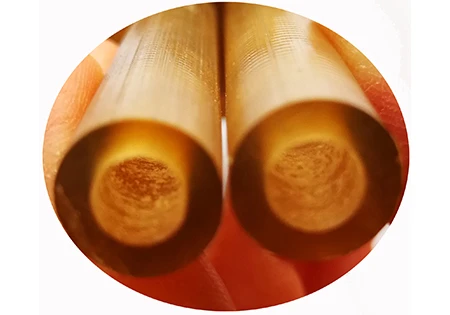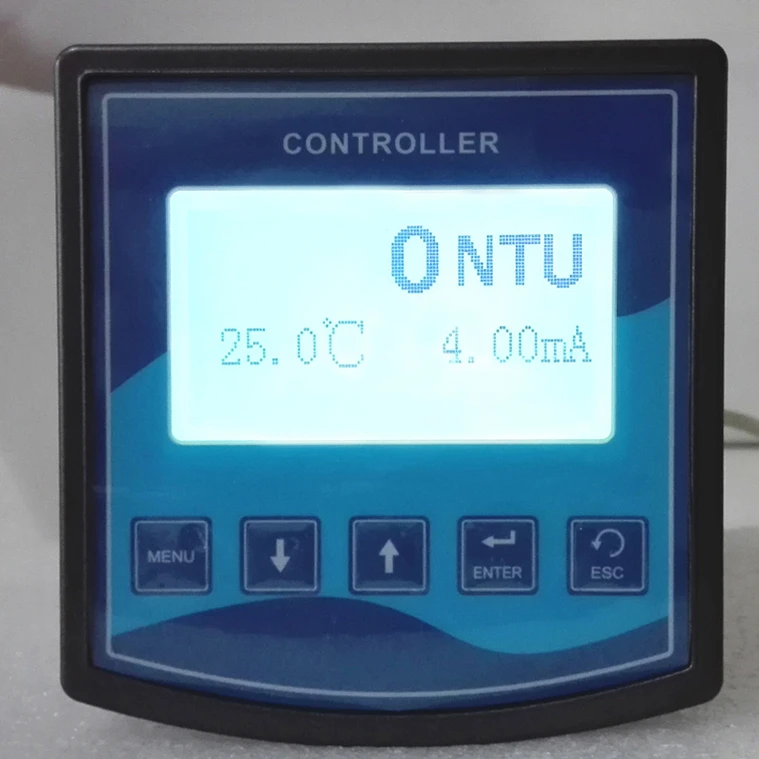Our turbidity controller is an advanced and reliable device designed to precisely monitor and regulate turbidity levels in various liquid systems. With its cutting - edge sensor technology, it can accurately detect even the slightest changes in turbidity, ensuring the quality and safety of the liquid being processed.This controller features a user - friendly interface, allowing operators to easily set target turbidity values and adjust control parameters. The large, clear display provides real - time turbidity readings, enabling quick and informed decision - making. It also has an alarm function that activates when the turbidity exceeds the pre - set limits, notifying operators promptly to take corrective actions.
The turbidity controller is highly versatile and suitable for a wide range of applications. In water treatment plants, it helps maintain the clarity of water by controlling the dosage of coagulants and flocculants. In industrial processes such as food and beverage production, pharmaceutical manufacturing, and chemical industries, it ensures product quality by preventing turbidity - related issues.Built with durability in mind, our turbidity controller is constructed from high - quality materials, making it resistant to corrosion and harsh environmental conditions. It is also easy to install and maintain, minimizing downtime and operational costs. Trust our turbidity controller to deliver accurate and consistent performance, safeguarding the integrity of your liquid - based operations.
What Is A Turbidity Sensor Used For?
A turbidity sensor is an essential device used to measure the cloudiness or haziness of a fluid, which is caused by the presence of suspended particles. This measurement is crucial as it provides valuable insights into the quality and purity of the liquid.In water treatment plants, turbidity sensors play a pivotal role. They are used to monitor the effectiveness of the treatment process. By continuously measuring the turbidity of water at different stages of treatment, operators can ensure that the water meets the required quality standards before distribution. For example, in the filtration stage, a sudden increase in turbidity readings might indicate a problem with the filter, such as clogging or damage, prompting immediate maintenance.In aquaculture, maintaining optimal water quality is vital for the health of aquatic organisms. Turbidity sensors help farmers monitor the turbidity levels in fish ponds and tanks. High turbidity can reduce light penetration, affecting photosynthesis of aquatic plants and potentially stressing the fish. By keeping a close eye on turbidity, farmers can take appropriate measures like adjusting water circulation or adding clarifying agents.
In the production of beverages such as beer, wine, and bottled water, turbidity sensors are used to ensure product quality. Cloudy beverages can be a sign of contamination or improper processing. These sensors are used during the filtration and bottling processes to detect any particles that could affect the appearance and taste of the final product.Our turbidity sensor operates based on the principle of light scattering. It emits a beam of light into the fluid sample. When the light encounters suspended particles, it scatters in different directions. The sensor then measures the intensity of the scattered light at a specific angle. The more particles present in the fluid, the higher the intensity of the scattered light, and thus, the higher the turbidity value.Our turbidity sensor is designed with high - precision optics, ensuring accurate and reliable measurements. It has a wide measurement range, making it suitable for both low - turbidity laboratory samples and high - turbidity industrial wastewater. The sensor is also highly durable, constructed with materials that can withstand harsh chemical and physical environments. It is easy to install and integrate into existing monitoring systems, providing seamless operation for users across various industries.Our turbidity sensor is a powerful tool for maintaining liquid quality, ensuring the smooth operation of industrial processes, and safeguarding the environment and public health.
How To Control Turbidity Of Water?
Effectively controlling the turbidity of water is crucial for maintaining water quality across various applications, from municipal water supply to industrial processes and aquaculture. Our comprehensive solutions offer reliable and efficient ways to manage water turbidity.One of the primary methods is through physical filtration. Our advanced filtration systems are equipped with high - quality filter media, such as multi - layer sand filters and activated carbon filters. These filters can trap suspended particles of different sizes, reducing turbidity significantly. The filter media is carefully selected to ensure maximum particle removal while minimizing pressure drop, allowing for continuous and efficient operation.The systems are designed with automatic backwashing features. When the filter media becomes clogged, the backwashing process is triggered, reversing the flow of water to clean the filter and restore its efficiency. This not only saves manual labor but also ensures that the filtration system operates at an optimal level at all times.
Another effective approach is chemical coagulation and flocculation. Our range of coagulants and flocculants are specifically formulated to interact with the suspended particles in water. Coagulants neutralize the electrical charges on the particles, causing them to come together. Flocculants then further agglomerate these small particles into larger, settleable flocs.The dosing of these chemicals is precisely controlled by our state - of - the - art dosing systems. These systems use advanced sensors to monitor the turbidity of the water in real - time. Based on the readings, the dosing systems adjust the amount of coagulant and flocculant being added, ensuring the most effective treatment while minimizing chemical usage.Our monitoring and control devices play a vital role. Turbidity sensors continuously measure the turbidity levels of the water. These sensors are highly accurate and can detect even the slightest changes in turbidity. The data collected by the sensors is transmitted to a central control unit. The control unit analyzes the data and can automatically adjust the operation of the filtration systems, dosing equipment, or other treatment processes. This closed - loop control system ensures that the turbidity of the water is maintained within the desired range at all times.
Our water turbidity control solutions are suitable for a wide range of applications. In water treatment plants, they help produce clean, clear water for domestic use. In industrial settings, such as power plants and manufacturing facilities, they prevent issues related to high - turbidity water, like equipment fouling and corrosion. In aquaculture, maintaining proper water turbidity is essential for the health of aquatic organisms, and our solutions can create an ideal environment. Overall, our products and technologies offer a reliable, efficient, and cost - effective way to control water turbidity.









